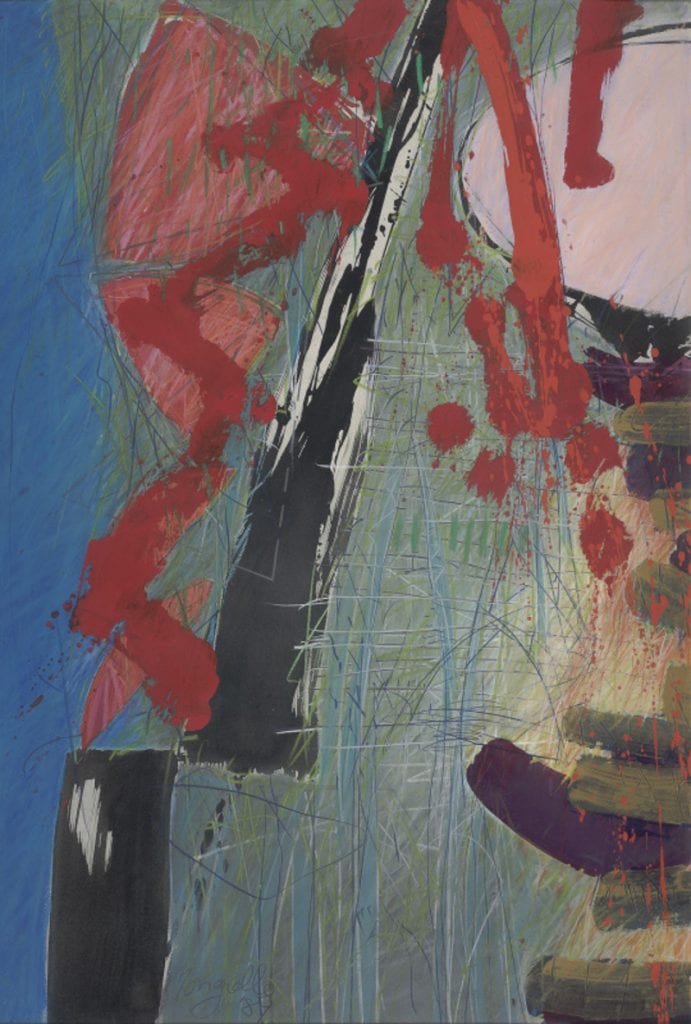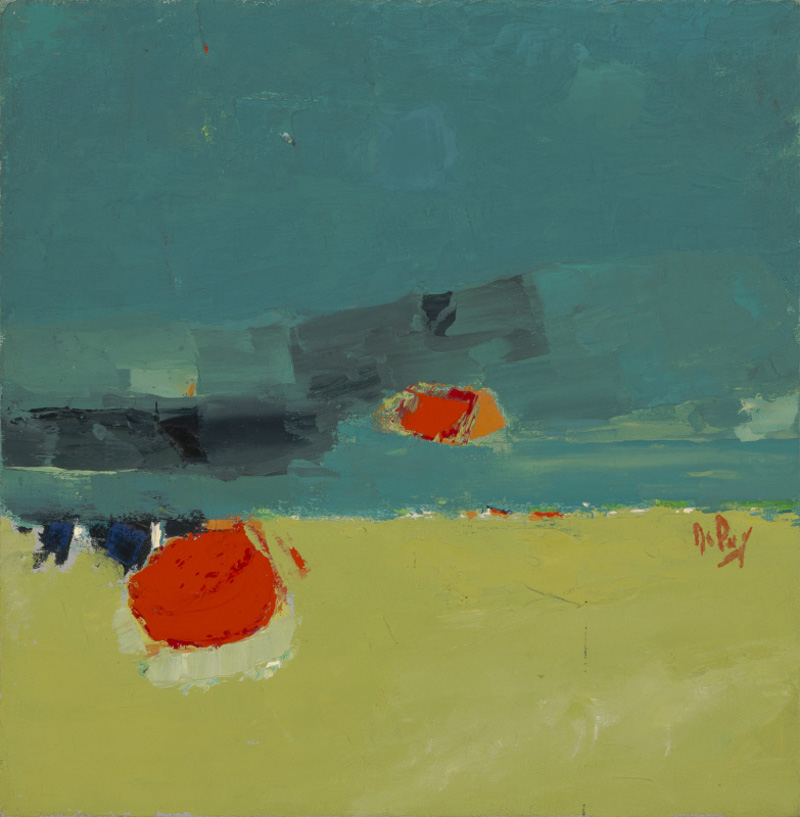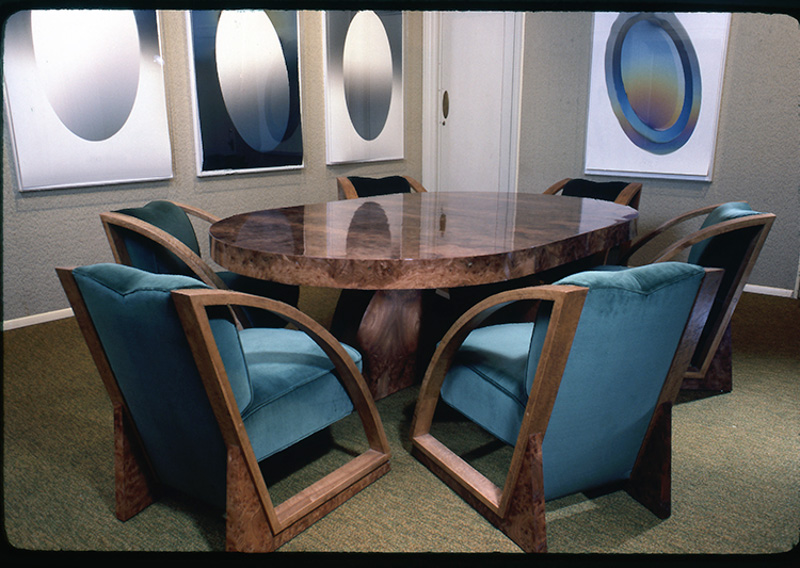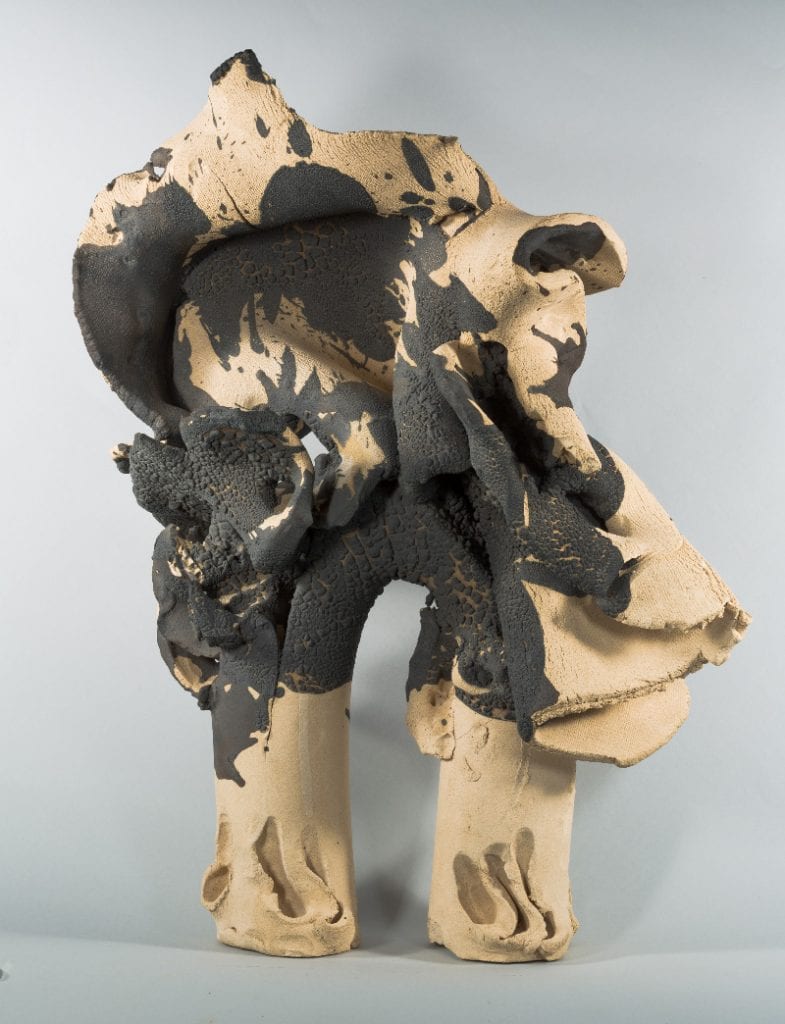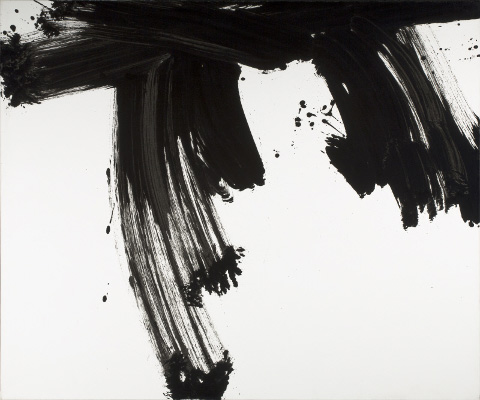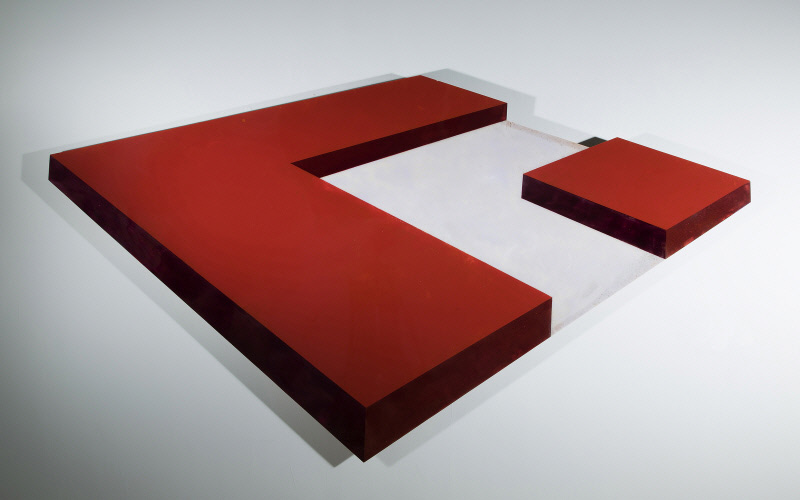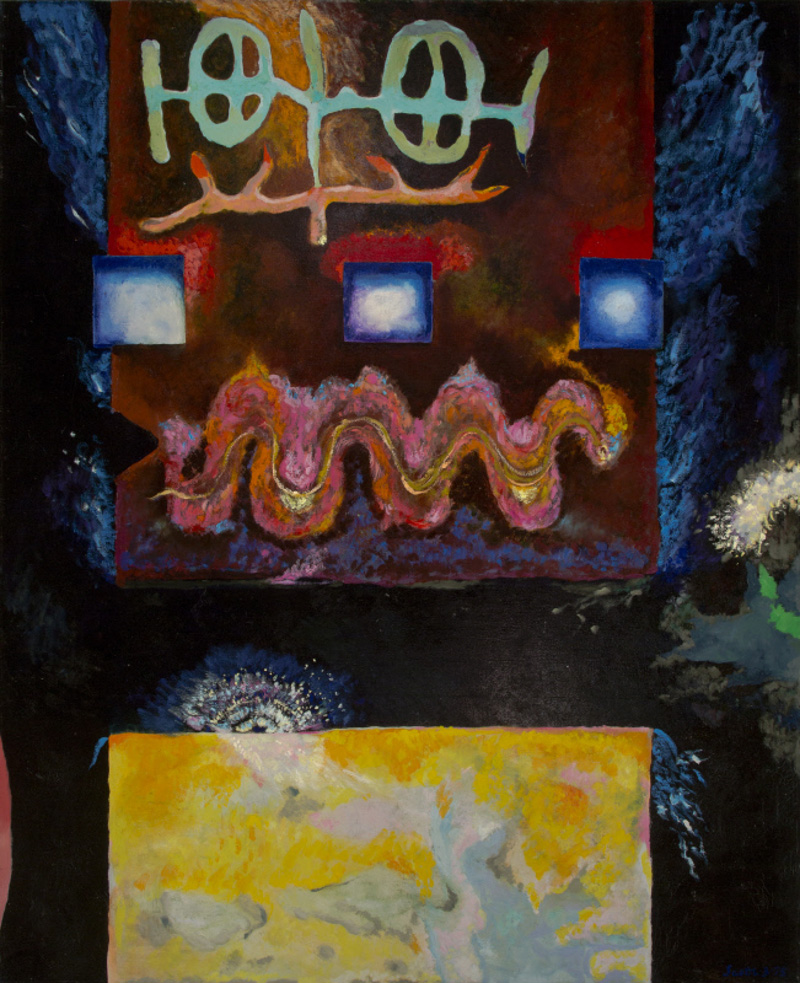Contemporary
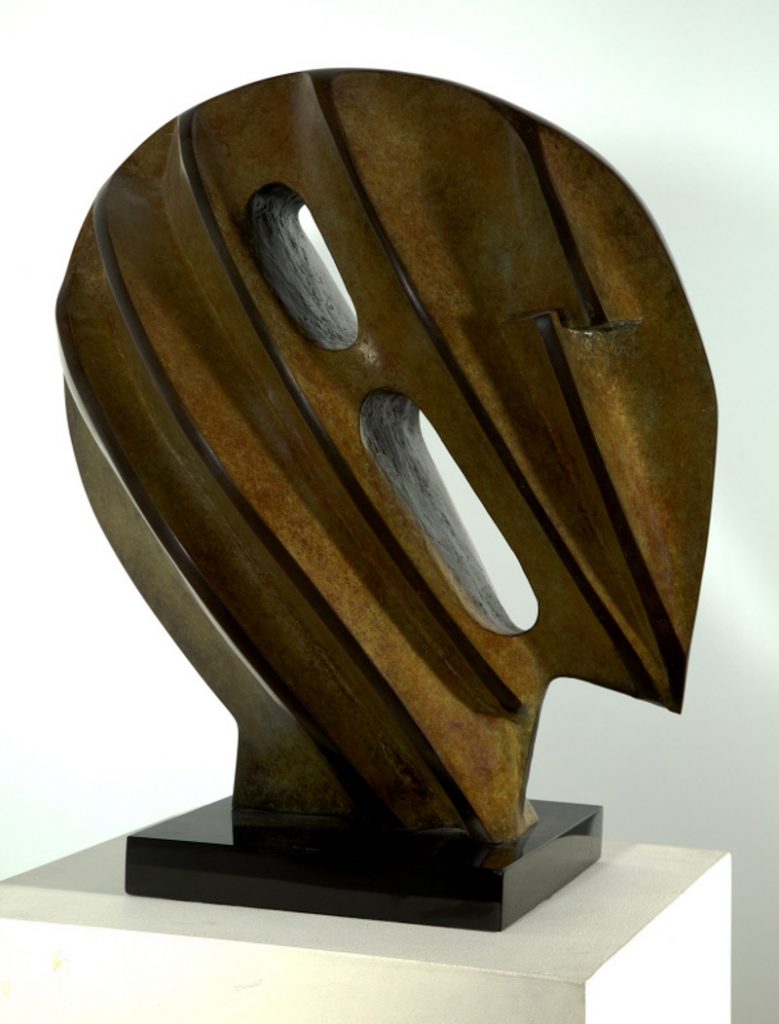
Peter Chinni, Ancient Being, 1999, Cast Bronze, Overall: 25 x 32 x 12 in. (63.5 x 81.3 x 30.5 cm), Museum Purchase
Contemporary Art at the Harwood Museum in Taos
The Harwood Museum of Art is proud to be the premiere museum showcasing contemporary art in Northern New Mexico. Our permanent contemporary art collection includes works by some of the most prominent contemporary artists in the United States.
Taos has been called “one of the most vital regional art communities in the U.S.” and maintains strong connections to national and international art worlds. Since the 1900s, established artists from both the East and West Coasts have spent time working in Taos or the surrounding northern New Mexico area. The Harwood Museum has always been at the center of the art scene in Taos, building its collection and exhibitions from contemporary artists of each era. The Harwood honors Taos’ artistic legacy while being the premier museum in Taos exhibiting contemporary art.
Beginning in the 1960s, Dennis Hopper, Larry Bell, Ron Cooper, Ronald Davis, Ken Price, Dean Stockwell and others landed in Taos, connecting this wild land to Los Angeles. These artists came from the vibrant art scene of 1960s Los Angeles in the milieu of Chouinard Art Institute, the Cool School and Ferus Gallery. Many of these artists worked in the veins of the Light and Space and Finish Fetish movements, translating unconventional materials into works of art.
Taos continues to be a place where artists come to find the power to create, and many have made Taos their home. The legacy of late 20th century and early 21st century artists who have found inspiration here include Vija Celmins, Lynda Benglis and Charlie Strong.
Larry Bell
Bell began his career in 1959 with his earliest works consisting of abstract, monochrome paintings on paper and shaped canvases. From 1968 to 1969, Bell began to produce work on a more environmental scale. He began creating sculptural installations with large sheets of glass that were rendered partly mirrored and partly transparent. At this time, Bell produced interior wall environments, such as The Black Room for both the Museum of Modern Art, New York (1969) and the Tate Gallery (1970).
Bell’s ‘Light Knot’ sculptures use only Mylar coated with metals and quartz. Twisted into knots and hung from a ceiling, they are like a series of mirrors that reflect the viewer and their immediate spatial surroundings. Bell’s more recent work includes large-scale glass installation as shown in the 2017 Whitney Biennial. Bell currently lives and lives and works between Los Angeles, CA and Taos, New Mexico.
Ken Price
Ken Price (1938 – 1912) received international acclaim and was recognized mostly for his incomparable colorful ceramic sculptures. These amorphous shapes were layered in paint and sanded to reveal the colors beneath creating immaculate brightly colored finishes. Price studied at Chouinard Art Institute, Otis Art Institute and Alfred University and was heavily influenced by Peter Voulkos who is known for elevating ceramics as fine art. Ken Price’s accomplishments as an artist were celebrated with a 50-year retrospective the year of his death, traveling from LACMA to Nasher Sculpture Garden and MoMA.
Ken Price’s first solo exhibition was at the Ferus Gallery in Los Angeles and he was an anchor of that scene. The then rising star ceramicist moved to Taos in 1971 with his wife Happy. He then began his monumental Happy Curio’s project. This project included Death Shrine 1, which is one of three such installations inspired by their travels to Mexico and the iconography of Día de Muertos.
In the spring of 1978, it was shown at the Los Angeles County Museum of Art. In 2013, Death Shrine 1 as well as a significant body of Ken Price’s sketches, small sculptures, and tequila cups were gifted to the museum from friend of the artist and collector Gus Foster.
The Harwood Museum is pleased to have the installation of Death Shrine 1 on permanent display. The collection crystallizes the relationship between Taos and Los Angeles within a museum honoring northern New Mexico’s long history as an artist colony. It is the only piece from the series currently on public view and on permanent display in the contemporary collection at the Harwood Museum. The other two Death Shrines are in the collections of the Art Institute of Chicago and the Seattle Art Museum.
Ronald Davis
Born in Santa Monica, California, Ronald was raised in Cheyenne, Wyoming. At the age of 22 he became interested in painting and attended the San Francisco Art Institute. Ronald was heavily influenced by Abstract Expressionism, the prevailing artistic movement of the time. In 1963 his paintings became hard-edged, geometric and optical in style, and by 1964 his works were shown in important museums and galleries. He lived and worked in Los Angeles and in Malibu, CA. Since 1991 he has lived and worked in Arroyo Hondo on the outskirts of Taos, New Mexico. His piece Six-Ninths Red is almost always on display at the Harwood Museum.
Agnes Martin
In 1946, after a five-year focus on teaching, Martin enrolled in the University of New Mexico, studying art. She spent the summer of 1947 enrolled in the UNM Field School in Taos and lived sporadically in Taos between 1953 and 1957. Martin returned to New Mexico in 1968 and to Taos in 1993, where she lived until her death in December 2004. The Harwood’s hexagonal chapel-like Agnes Martin Gallery, the only permanent installation of her work, was inaugurated in 1993. Martin was featured in a 1992 retrospective at the Whitney Museum of American Art; she received a 1997 Golden Lion lifetime achievement award from La Biennale di Venezia; and was designated by Art in America at the end of the 1990s as one of the world’s leading artists.
Learn about one of the foremost Taos contemporary artist and our collection of Agnes Martin
History of Contemporary Artists in Taos
Like the people of the Taos Pueblo, art and artists in Taos continue to evolve, grow and change with the passage of time. Native cultures are often inaccurately imagined as frozen in a long ago past, when in fact their culture, art, rituals and way of life are ever changing and thriving in the present. Old ways are transmuted into new ways, just as the original Taos art community transitioned over time while still honoring the inspiration and creativity of its founders.
The sixties and seventies witnessed the deaths of many of the original artists whose work was immeasurably influential to the Taos art community. Mabel Dodge Luhan died in 1962. When Andrew Dasburg, Emil Bisttram and Dorothy Brett died in the 1970s, the last living connections to the earliest decades of the community vanished.
At such a critical juncture, many art communities might have disbanded or slowly faded away into irrelevance. But Taos continued to be a creative magnet, calling to an entirely new generation of artists who became enchanted with the beauty, tranquility, and deep sense of connection to place in this magical mountain town. Most arrived believing they were here for a brief sojourn, but like so many before them, never left. In the early 1970s, Dennis Hopper visited Taos during the filming of “Easy Rider.” He produced a rough cut of the film here and decided to stay, eventually purchasing the Mabel Dodge Luhan house. Hopper boasted that his guest list rivaled that of Mabel’s, with a revolving door of artists, musicians and Hollywood personalities as his frequent guests. Los Angeles artists such as Ken Price, Larry Bell, Ron Cooper and Gus Foster came and chose to stay year-round. Others like Lee Mullican and Larry Calcagno spent part of each year here.
Contemporary Art at the Harwood Museum
Art from our permanent collection of Contemporary art is always on display at the Harwood Museum in the Agnes Martin Gallery and Ken Price’s Death Shrine I.
Our permanent art collection includes art by these notable Contemporary Artists:
- Ken Price
- Larry Bell
- Ronald Davis
- Ron Cooper
- Dennis Hopper
- Tony Abyeta
- Vija Clemins
- Charles Strong
- Peter Chinni
- Kevin Cannon
- Bill Gersh
- Lawrence Calcagno
- Rick Dillingham
- John DePuy
- Lee Mullican
- Rod Goebel
- John Suazo
- Marylou Reifsnyder
- Marsha Skinner
- Angie Coleman
See Our Contemporary Art Collection
Explore our permanent art collection with images and a searchable online database.


